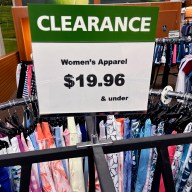Two recent cases define the current state of workplace law in Canada above all others. Both cases have made a drastic impact, and unfortunately both are often misunderstood.
When the Supreme Court mostly erased the substantial damages a lower court awarded to Kevin Keays, an assembly line worker at Honda’s manufacturing plant in Alliston, Ontario, employers in Canada collectively sighed in relief.
According to the court, employers would no longer be responsible for “bad faith” damages based on how they treat their employees. Instead, it declared that employees could sue for mistreatment only if they could prove they actually suffered from harm.
Most corporate lawyers leapt on the bandwagon and pronounced bad faith damages all but dead. An employee could be mistreated, they routinely argued, but without evidence of a medical illness, damages would be much more difficult to achieve. That is wrong. In the three years since the Supreme Court released its decision in Keays, lower courts have not applied it consistently and sometimes not at all. In one recent appellate case, the court upheld a bad faith damage award, as if the Supreme Court’s decision had never been rendered at all. While the law may have changed, it is possibly only in the name.
Similarly, when the Supreme Court ordered Donald Evans to return to work after his employer had already fired him, employers in this country felt they had gone from strength to strength. Employees have a duty to “mitigate” their losses following dismissal and, according to the Supreme Court, this duty includes taking a job with the company that has just fired them. Cognizant of the problems this finding could cause, the court thankfully made several exceptions. If returning to work was humiliating, for example, employees could refuse to return.
Since then, companies have routinely relied on this decision in an effort to deny wrongful dismissal claims. Often employees are “invited” back to work, but ironically only after first threatening to sue. Very few judges agree that these invitations are legitimate or that returning to work is a reasonable demand to make. Despite the Supreme Court’s decision, not much has changed.
As I usually find with workplace law, the game may be different but the decisions are often the same.
Daniel A. Lublin is an employment lawyer with Whitten & Lublin LLP. Reach him at dan@toronto-employmentlawyer.com. Follow him on Twitter @danlublin.
















